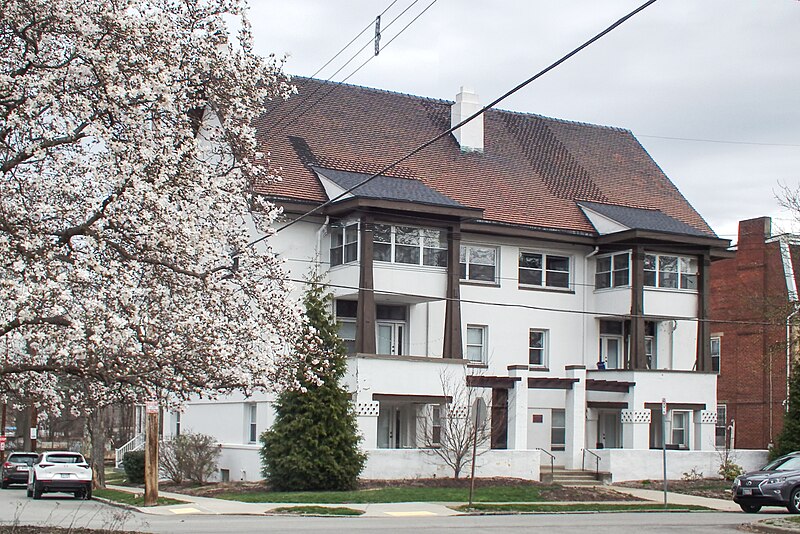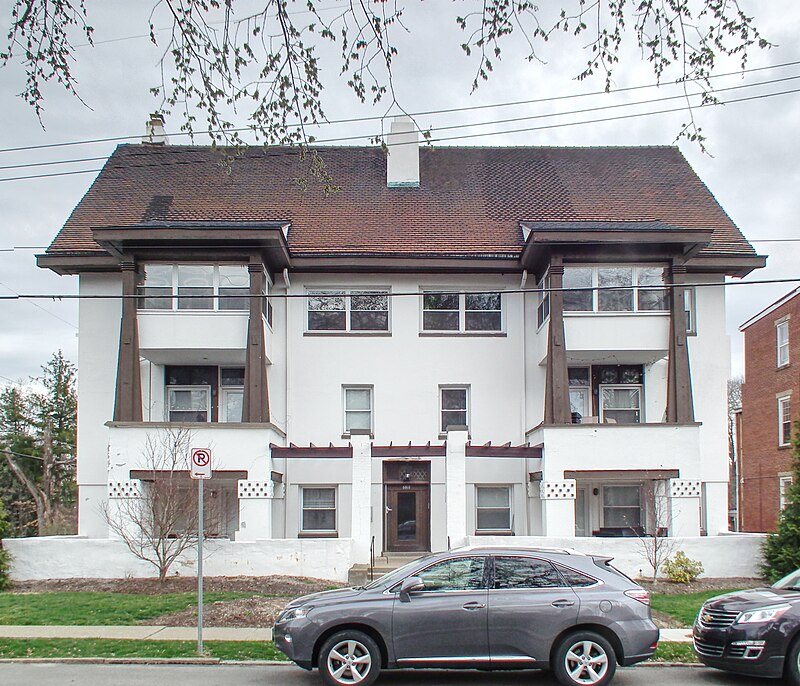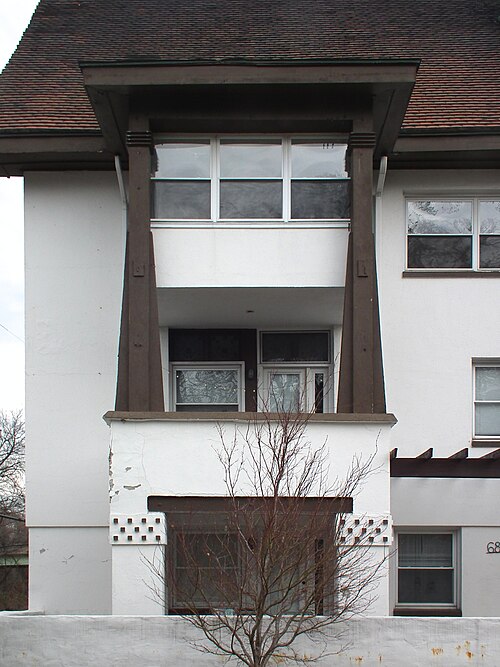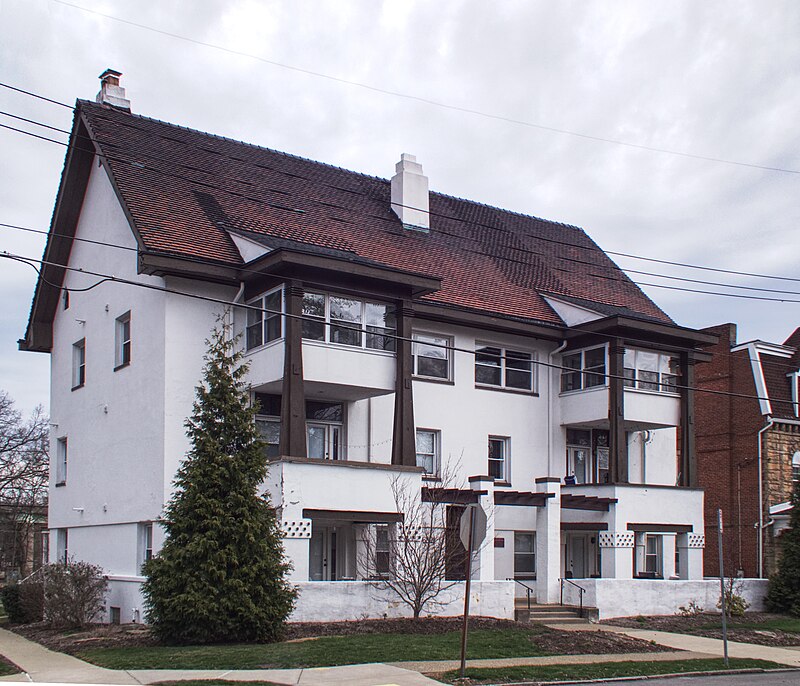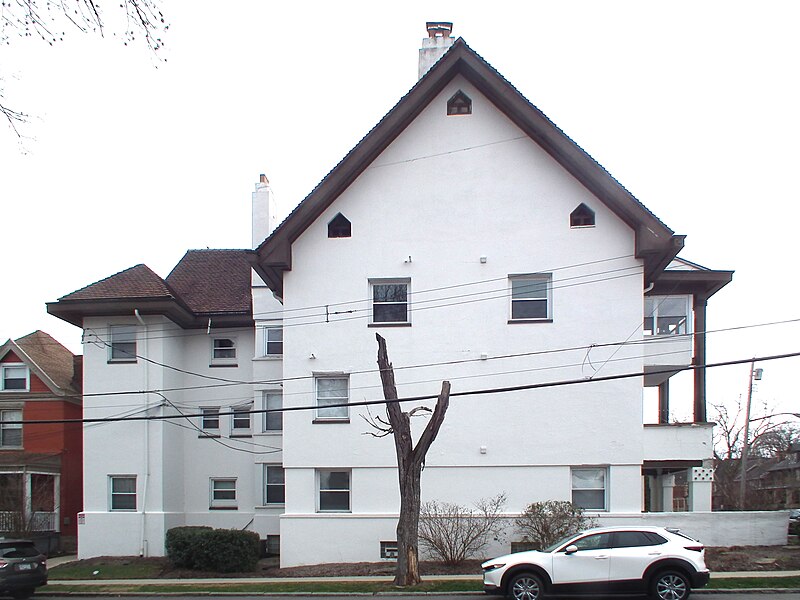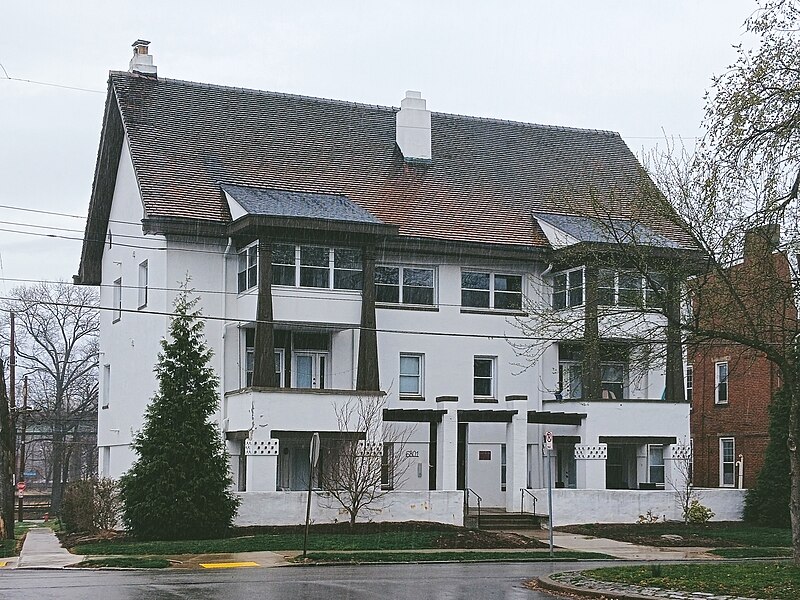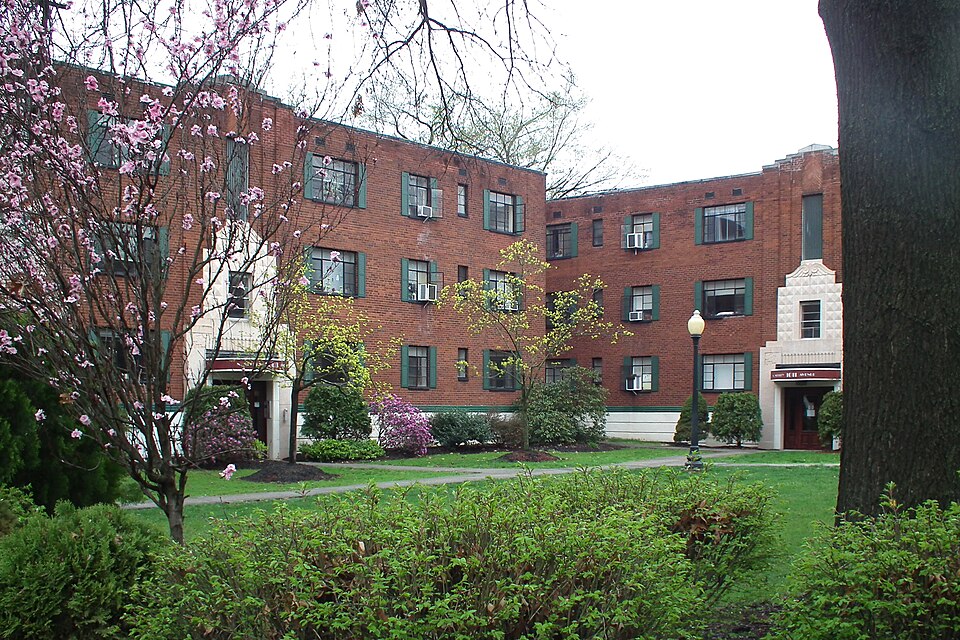
This is a big apartment complex, but it is not nearly as big as it was meant to be.
In the beginning of 1939, an apartment complex was proposed for this land. it would require zoning changes in an area that was mostly single-family houses and mansions, and when residents saw the designs by architect Clifford Lake, there was much loud protest.

It would be a huge complex of interlinked towers, nine storeys high, that would completely change the character of Negley Avenue. “It will be necessary for City Council to change the district from a Class A to a Class C zone before work can be started,” the Press reported.
It was obvious from the reaction that the plans had been far too ambitious. By May, the plans had shrunk. “Original plans for the structure have been scaled down from a nine-story 623-family apartment to the present six-story building, Mr. Lake said.”
But many of the residents nearby were still not satisfied. Give them an inch, they thought, and who knows how many ells they might take?
“You well understand,” said an attorney for the opposing property owners, “that it is impossible under the law to negotiate what kind of structure will be built after the zoning ordinance is passed.
“They propose to change the law so that hotels, educational and charitable institutions, jails and commercial businesses can be placed in a district where these people have built homes.”
It was not until a year later, in 1940, that a building permit was applied for. But the fight wasn’t over. When the zoning law was changed, residents went to court, and they won. Then came the Second World War, which was an even bigger fight than the zoning battle.
Finally, in 1946, the zoning law was changed to permit three-storey apartments in the area, and construction of the reduced complex begin in 1947, finishing in 1948.
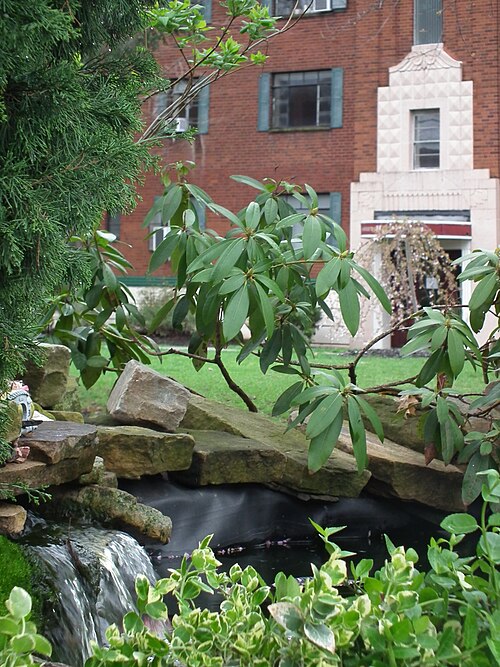
Perhaps because of the long fight, the complex makes a surprisingly modest impression from the street. The landscaping is lush and park-like: this complex, like Gateway Center, makes good on the promise of “towers in a park,” although “towers” is a bit generous for buildings with three floors and a high basement.
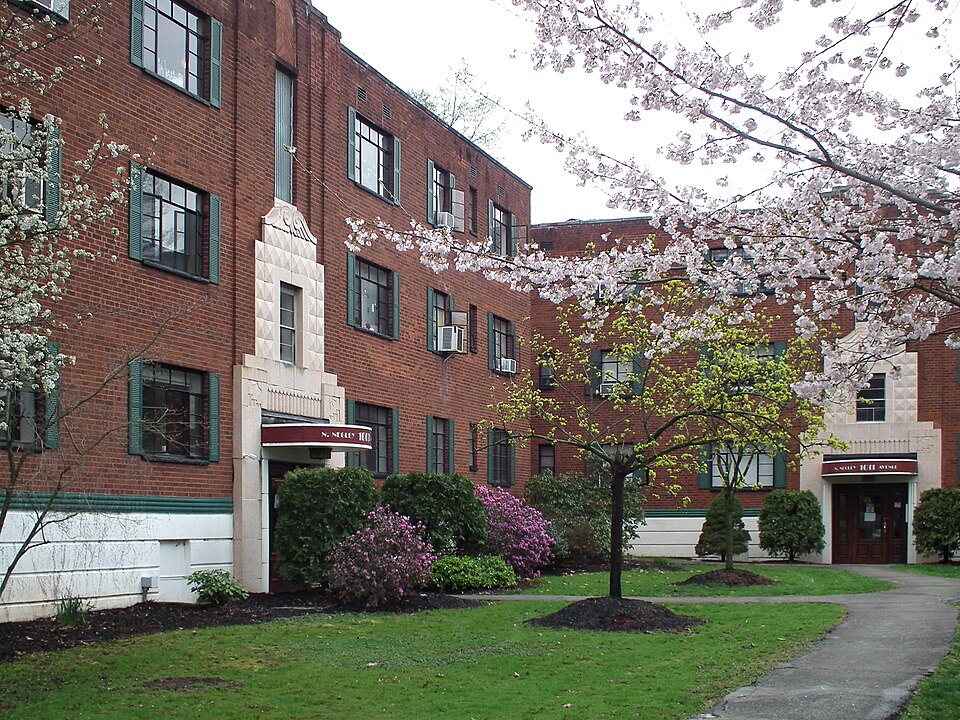
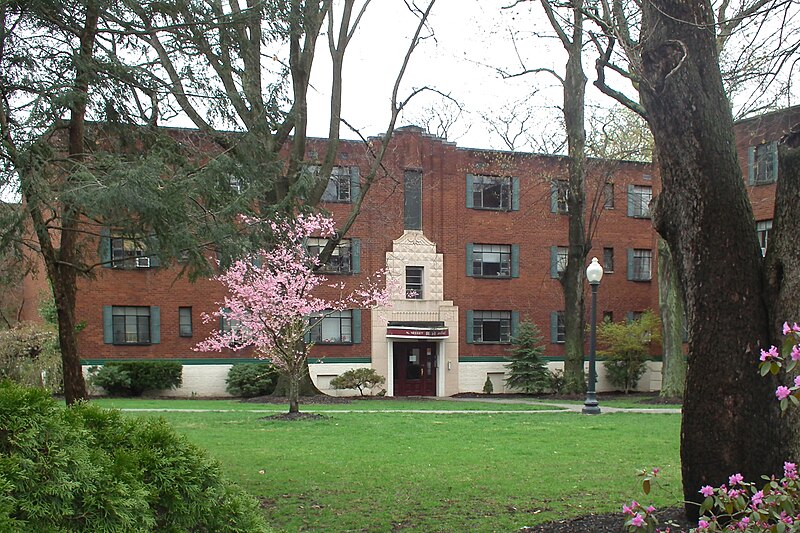
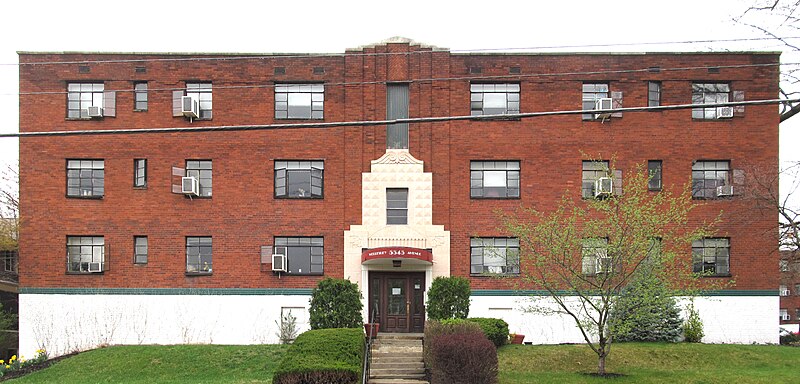
The buildings themselves are fairly ordinary, not the dream towers Mr. Lake envisioned in 1939. The entrances, however, are decorated in late-Art-Deco fashion to maintain the impression that you are approaching something special.
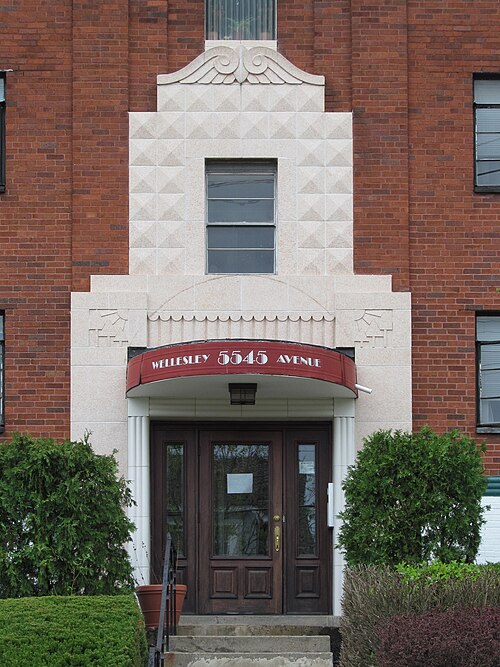
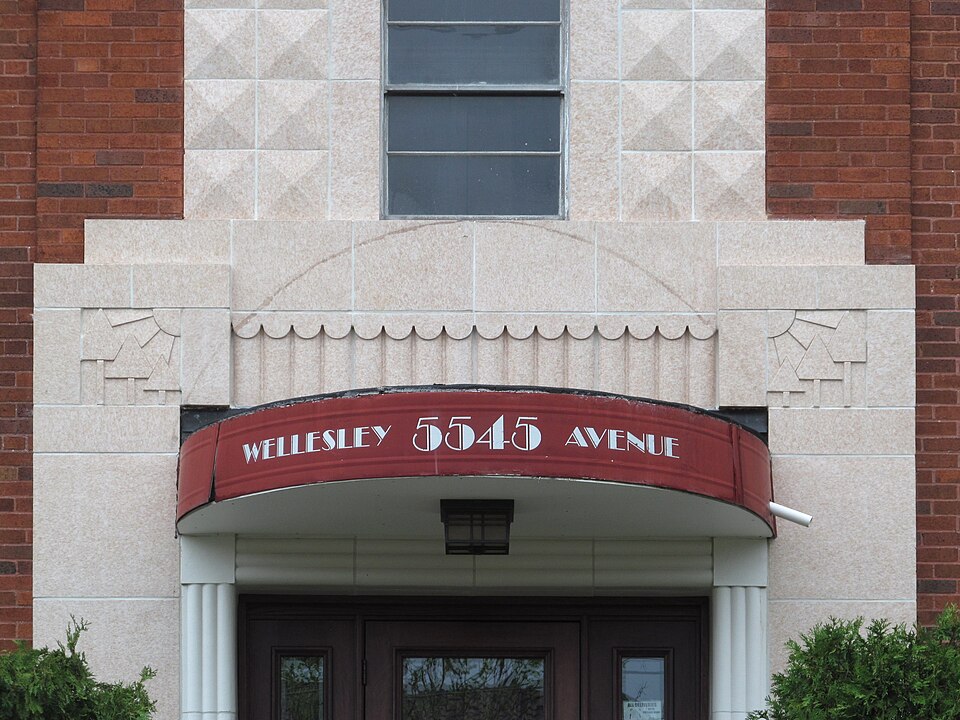
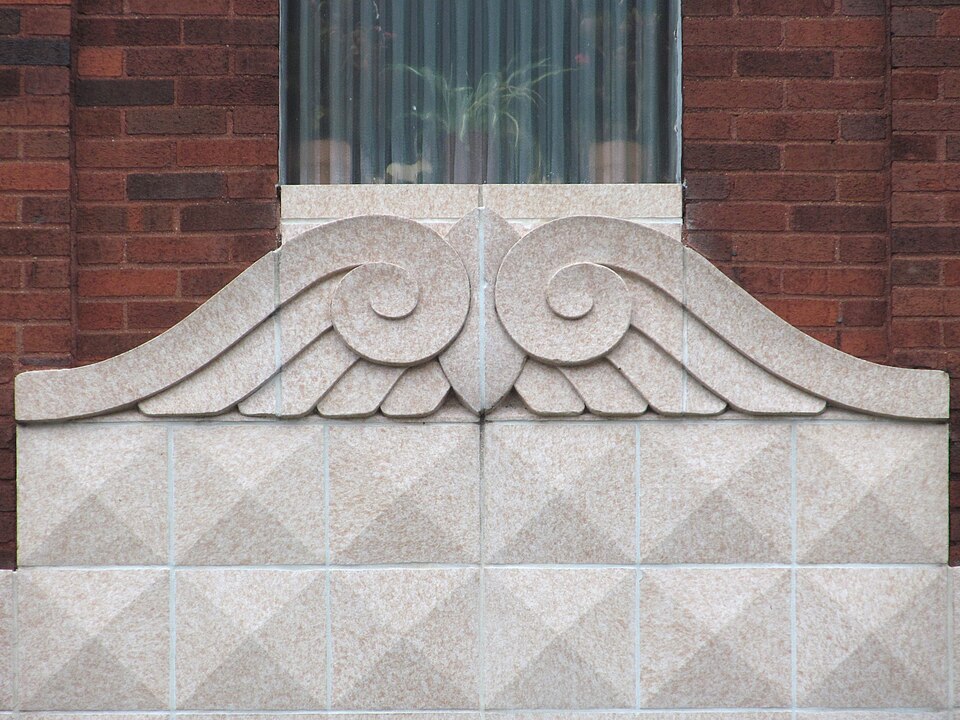
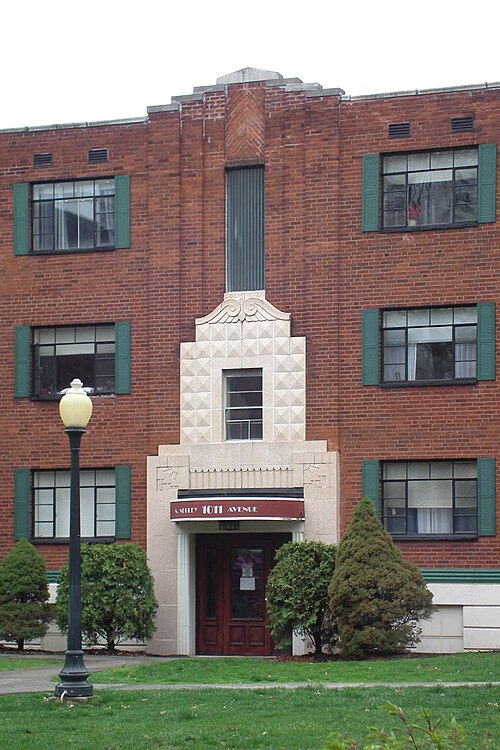
The sides of the buildings facing the garden court have been given ridiculously narrow cartoon paste-on shutters, which do them no favors. The sides facing the side streets have no shutters and look the way Mr. Lake meant them to look.
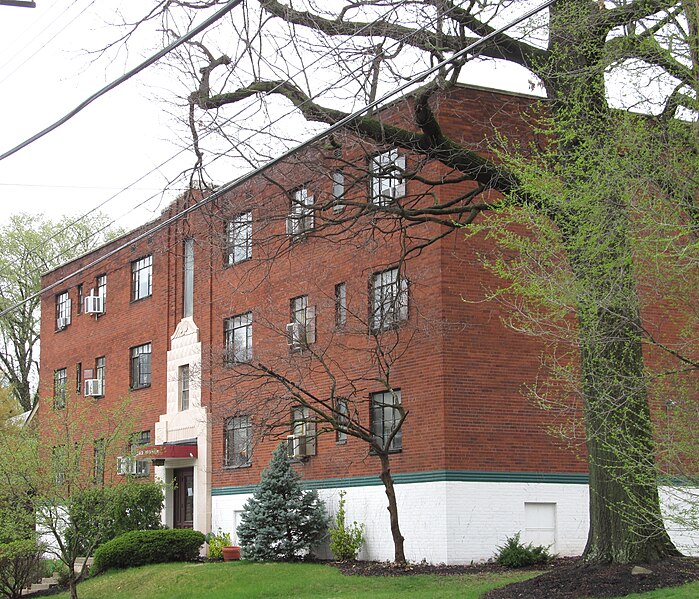
Comments










